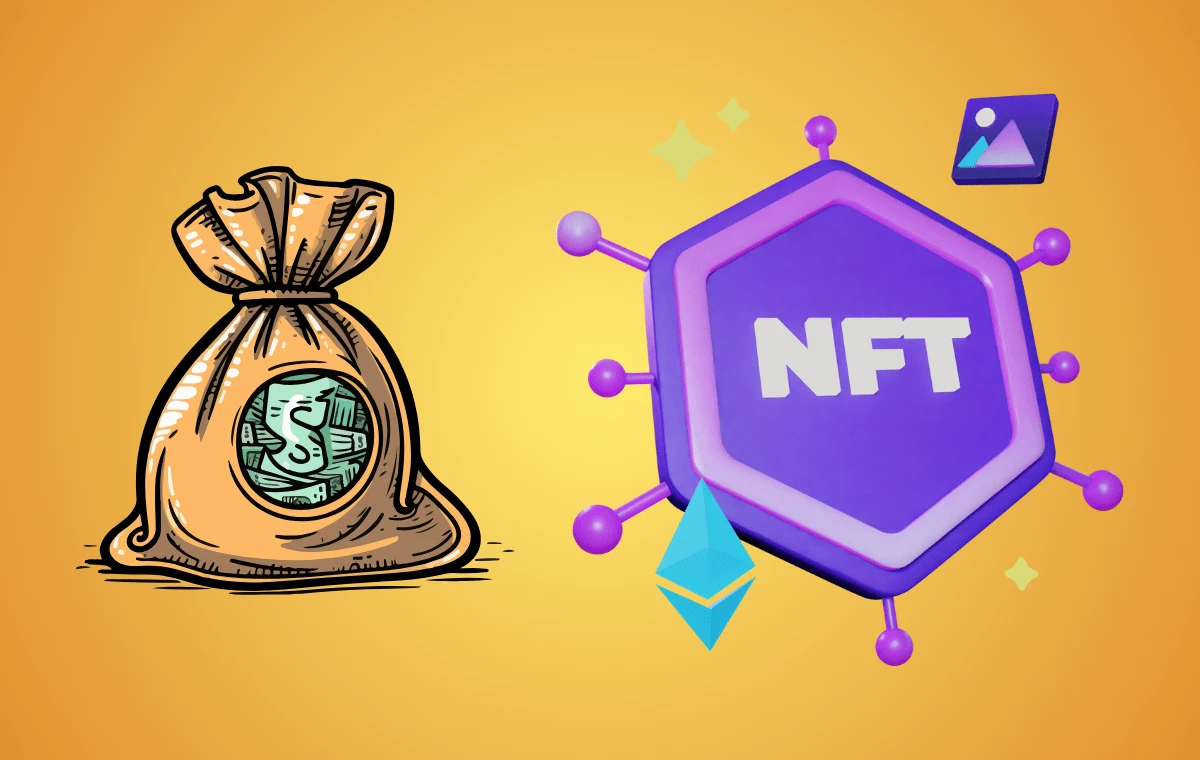LIC Jeevan Utsav (Plan 871) is a non-linked, non-participating, individual, savings whole life insurance plan, introduced by LIC in November 2023. It offers guaranteed lifetime income after a limited premium payment term, making it a great blend of insurance and retirement planning.
Key Features of LIC Jeevan Utsav
| Feature | Details |
|---|---|
| Plan Type | Whole Life, Non-Linked, Non-Participating |
| Policy Term | Whole Life (no maturity, income continues for life) |
| Premium Payment Term (PPT) | 5 to 16 years |
| Entry Age | Minimum: 90 days Maximum: 65 years |
| Maximum Age at End of PPT | 75 years |
| Sum Assured (SA) | Minimum: ₹5,00,000No upper limit (in multiples of ₹25,000) |
| Premium Modes | Yearly, Half-Yearly, Quarterly, Monthly (ECS/NACH) |
| Guaranteed Additions | ₹40 per ₹1,000 Sum Assured per year during PPT |
| Income Payout Options | Regular Income / Flexi Income |
| Loan Facility | Available after 2 full policy years |
What Are Income Benefit Options?
After completion of the Premium Payment Term (PPT), LIC Jeevan Utsav offers a guaranteed yearly income for the entire lifetime of the policyholder. You can choose to receive this income in two ways:
1. Regular Income Benefit Option
Key Features:
- You will receive 10% of Basic Sum Assured (SA) every year.
- The payouts begin 1 policy year after completion of the PPT.
- Income is paid annually (fixed amount).
- This income continues till the life assured survives (whole life).
- The amount is not adjustable for inflation—it remains constant.
Example:
Let’s assume:
- Sum Assured = ₹10,00,000
- PPT = 12 years
- Policyholder’s age = 35 years
Then,
- Guaranteed Annual Income = 10% of ₹10,00,000 = ₹1,00,000
- Starts from 13th policy year (1 year after PPT)
- If the policyholder lives till age 80 (for example), total income received = ₹1,00,000 × ~35 years = ₹35 Lakhs
Best For:
- Individuals who want an assured, consistent income every year.
- Ideal for retirement planning or creating a fixed second income stream.
Considerations:
- The annual payout is fixed, so it may lose purchasing power over time due to inflation.
- You must be comfortable with no reinvestment/accumulation feature—it’s a “take as you go” model.
2. Flexi Income Benefit Option
Key Features:
- LIC Jeevan Utsav does not pay the income directly every year.
- Instead, the 10% of Basic SA per year is credited to a separate income benefit account within LIC.
- LIC pays 5.5% interest compounded annually on this amount.
- You can withdraw the accumulated income fully or partially at any time.
- Withdrawals are tax-free under Section 10(10D), if all conditions are met.
Example:
Let’s use the same assumptions:
- SA = ₹10,00,000
- PPT = 12 years
- From the 13th year onward, LIC will credit ₹1,00,000 every year to the Flexi Income account.
- This account earns 5.5% p.a. interest, compounded yearly.
If the policyholder does not withdraw any money for 10 years, here’s what it would look like approximately:
| Year | Annual Credit | Interest @5.5% | Account Value |
|---|---|---|---|
| 1 | 100000 | 5,500 | 105,500 |
| 2 | 100000 | 11,303 | 216,803 |
| 3 | 100000 | 17,424 | 334,227 |
| 4 | 100000 | 23,882 | 458,109 |
| 5 | 100000 | 30,696 | 588,805 |
| 6 | 100000 | 37,884 | 726,689 |
| 7 | 100000 | 45,468 | 872,157 |
| 8 | 100000 | 53,469 | 1,025,626 |
| 9 | 100000 | 61,909 | 1,187,535 |
| 10 | 100000 | 70,814 | 1,358,350 |
(These are estimates; actual interest application may vary)
Who Should Choose the Flexi Income Benefit Option?
The Flexi Income Benefit Option under LIC Jeevan Utsav is not just a feature—it’s a strategic financial planning tool. Unlike the Regular Income Option that disburses a fixed 10% of the Basic Sum Assured every year after the Premium Payment Term (PPT), this option allows you to accumulate your income and withdraw it as per your financial needs. Here’s who it works best for:
1. Individuals Who Do Not Need Immediate Income
If you’re someone who:
- Is financially self-sufficient,
- Has alternate sources of income (salary, business, rental income),
- Or is it still in the wealth accumulation phase of life.
Then you may not need the 10% annual income right away after the premium payment term. Instead of letting this income lie idle in a savings account or being used unnecessarily, it can be parked within the policy, where it compounds annually at 5.5%, offering risk-free returns.
Why It’s Ideal:
Your income grows silently in the background without tax liability (subject to Sec 10(10D) conditions), creating a sizeable future corpus.
2. Planning for Children’s Education or Marriage
Large future expenses such as:
- Higher education (college fees, foreign university),
- Wedding costs (venue, gifts, jewellery),
often require a lump sum rather than small annual payouts.
With the Flexi Income Option, you can:
- Accumulate income for 8–10 years,
- Let it grow at 5.5% annual interest,
- Withdraw only when the expense arises—all tax-free (if compliant).
Example:
Let’s say you accumulate ₹1 lakh per year for 10 years = ₹10 lakhs. With interest, the fund may grow to over ₹13.25 lakhs (approx). That’s a ready corpus for your child’s college admission or marriage.
3. Medical Emergency or Treatment Planning
Health care expenses in retirement can be sudden and costly:
- Hospitalization,
- Surgeries,
- Home care or long-term illness management.
Rather than relying on annual payouts (which may not be enough), the Flexi option allows you to:
- Build a medical contingency fund,
- Keep it growing safely with LIC’s declared interest rate (5.5% p.a.),
- Use it only when needed, in full or in parts.
This acts like your personal emergency reserve, fully accessible and not market-linked.
4. Funding a Property Purchase or Renovation
Planning to:
- Buy a small property for rental income,
- Build a retirement home,
- Or renovate your existing house?
The Flexi option is ideal because:
- You can accumulate 10–15 years of income + interest,
- Create a corpus of ₹10–20 lakhs or more (depending on SA),
- Withdraw the amount in one go when your real estate plan is ready.
This defers unnecessary withdrawals and gives you a better return than traditional savings accounts or recurring deposits.
5. High-Net-Worth Individuals (HNIs) and Legacy Planners
HNIs and financially independent families often use insurance as part of estate planning or legacy creation. The Flexi Income Option serves this purpose beautifully:
- It becomes a tax-efficient corpus that grows over time.
- Since withdrawals are optional, the entire accumulated income plus interest is passed to the nominee in case of death.
- It allows you to control the timing and size of transfers to heirs, especially helpful if you want to stagger wealth distribution.
Why HNIs Prefer This:
- Guaranteed returns without equity risk,
- No active management needed,
- Becomes part of a larger, well-diversified estate plan.
What is the Death Benefit in LIC Jeevan Utsav Plan?
The Death Benefit refers to the amount paid by LIC to the nominee in case the policyholder (life assured) passes away during the policy term, i.e., anytime after buying the policy and while it is in force.
LIC Jeevan Utsav offers a comprehensive death benefit that ensures financial security to the family. It varies depending on whether the policyholder dies during the Premium Payment Term (PPT) or after the PPT has been completed.
Key Terms to Understand First:
Before we dive in, let’s understand some important terms:
| Term | Meaning |
|---|---|
| Sum Assured on Death | The minimum guaranteed death benefit amount as per the LIC rules |
| Basic Sum Assured (SA) | The amount chosen by the policyholder at the time of buying the policy |
| Death Benefit | The actual payout made to the nominee |
| Premiums Paid | Total premiums paid till date of death, excluding taxes & rider premiums |
1. If Death Occurs During the Premium Payment Term (PPT)
This is the period when the policyholder is still paying premiums.
Death Benefit Paid:
Sum Assured on Death + Accrued Guaranteed Additions (GAs) Where:
- Sum Assured on Death = Higher of
a) 125% of Basic Sum Assured
b) 7 times of Annualised Premium
Minimum death benefit = At least 105% of total premiums paid till date of death.
Example:
Let’s say:
- Basic Sum Assured = ₹10,00,000
- Annual Premium = ₹90,000
- PPT = 12 years
- Death occurs in the 5th policy year
- Guaranteed Additions accrued = ₹50,000 per year × 5 = ₹2,50,000
- Sum Assured on Death = Higher of:
-
125% of SA = ₹12,50,000
-
7 × Annual Premium = ₹6,30,000 So, use ₹12,50,000
Death Benefit Paid = ₹12,50,000 + ₹2,50,000 = ₹15,00,000
This amount is paid as a lump sum to the nominee.
2. If Death Occurs After the Premium Payment Term (Post-PPT)
This is the phase when the policyholder has completed paying all premiums and has started receiving (or accumulating) the income benefit. In this case, LIC pays:
Death Benefit Paid:
Basic Sum Assured (SA) + Accrued Guaranteed Additions (GAs)
Future Income Benefit Payments as a lump sum, discounted at 5.5% p.a.
What Is “Future Income Benefit Payments” in LIC Jeevan Utsav
Remember: After PPT, the life assured is entitled to receive 10% of SA every year till lifetime. If the policyholder dies, LIC calculates all future payouts that would have been paid as income (till life expectancy) and pays them upfront to the nominee, discounted at a fixed rate of 5.5% annually.
This amount is called “Discounted Value of Future Income Benefits”.
Example:
Let’s assume:
- Basic Sum Assured = ₹10,00,000
- Guaranteed Additions = ₹50,000 per year × 15 years = ₹7,50,000
- 3 years of income already paid before death (₹1,00,000 × 3 = ₹3,00,000)
- Life expectancy assumed = 40 years total (after PPT), so 37 years of future income left
- LIC discounts these 37 years of ₹1,00,000 payouts at 5.5% p.a.
- Death Benefit = ₹10,00,000 + ₹7,50,000 + ₹Future Income Value (Discounted)
This could total to around ₹35–₹40 lakhs or more (approximate—exact amount depends on age and timing of death).
LIC provides a lump sum payout of the entire calculated benefit.
Minor Nominee? Additional Rules Apply
If the nominee is a minor, LIC may hold the payout in trust or pay it to the appointed guardian. The policyholder can specify this while filling the proposal form.
Other Key Points:
- All Riders (if taken), such as the Accidental Death Benefit Rider, are paid over and above the base death benefit.
- The death benefit is tax-free under Section 10(10D) of the Income Tax Act (subject to applicable conditions).
- Policy must be in force at time of death—i.e., all due premiums must be paid.
Withdrawals Under Flexi Income Option
Withdrawals are allowed only if you have chosen the Flexi Income Benefit Option, and not the Regular Income Option.
Key Features:
- Income Benefit under Flexi option is accumulated every year (10% of Basic Sum Assured per year after PPT).
- This accumulated amount earns interest @ 5.5% p.a. (compounded annually).
- You can withdraw any amount (partial or full) from this accumulated fund after PPT.
- Withdrawals are not restricted by frequency, but must be in multiples of ₹1,000.
- The remaining unwithdrawn balance continues to earn 5.5% p.a. interest.
Surrender of LIC Jeevan Utsav Plan
You may surrender the policy if you no longer wish to continue. LIC provides a surrender value, but it comes with certain rules and implications.
When Can You Surrender?
- You can surrender the policy after at least 2 full years’ premiums are paid.
- Surrender is possible at any time during the policy term.
- Once surrendered, the policy is terminated and all benefits cease.
What Do You Get?
You will receive the higher of:
- Guaranteed Surrender Value (GSV)
- Special Surrender Value (SSV) (subject to LIC’s discretion)
GSV:
- Calculated as a percentage of total premiums paid (excluding taxes & rider premiums) + surrender value of Guaranteed Additions (if any).
- GSV percentage increases with the policy duration.
SSV:
- Based on LIC’s current actuarial valuation.
- Usually higher than GSV, but not fixed, declared by LIC from time to time.
Disadvantages of Surrender:
- You may receive much less than the total premiums paid, especially in the early years.
- You lose out on income benefits and the long-term value of the plan.
- Tax benefits under Sec 80C & 10(10D) may be reversed.
It is recommended to surrender only if necessary.
Loan Facility Under LIC Jeevan Utsav
This policy allows you to take a loan against the policy to meet short-term liquidity needs, without surrendering the policy.
When Can You Take a Loan?
- After 2 full years’ premiums are paid, you are eligible to apply for a loan.
- The policy must be in force (not lapsed or under paid-up status).
How Much Loan Can You Get?
| Phase | Maximum Loan Available |
|---|---|
| During PPT (pre-income) | Up to 90% of the surrender value |
| Post PPT (in income phase) | Up to 80% of the surrender value or cash value of the income benefit fund |
Interest Rate:
- Declared by LIC from time to time (currently ~9–10% p.a.).
- Payable half-yearly.
Repayment Terms:
- You can repay partially or fully at any time.
- Outstanding loan and interest are deducted from the maturity/death benefit if not repaid.
Important:
- If interest accumulates and the loan value exceeds the surrender value, the policy may lapse.
- Any unpaid loan reduces the benefit payable.
Paid-Up & Revival
- If premiums cease early but ≥3 full years paid and death occurs within 6 months, full death benefit applies (minus dues)
- Paid-up benefits adjust based on paid-up SA income benefit percentages differ for SA brackets (e.g., 5% for ₹2–3 L; 10% for ≥₹5 L)
Rider Options
Enhance policy with riders:
- Accidental Death/Disability
- Accident Benefit
- Term Assurance
- Critical Illness
- Premium Waiver Benefit
(Subject to eligibility & extra premium)
Pros & Cons
Advantages
- Guaranteed lifelong income
- Fixed GAs boost returns
- Flexibility with income options
- Loan/liquidity support
- Comprehensive death cover formula
- Optional riders for enhanced protection
- No reliance on bonus; transparent structure
Limitations
- No lump-sum maturity benefit
- Fixed income may lag inflation
- Long-term commitment, premiums must complete the PPT
- Flexi withdrawals taxable
- Overall, IRR is modest (6–7%)
Conclusion
LIC Jeevan Utsav (Plan 871) is a robust product offering:
- Guaranteed lifetime payouts
- Comprehensive death benefit
- Flexible, retirement-oriented features
Perfect for those valuing certainty over high returns and willing to commit long-term. However, if you want lump-sum maturity, dynamic return potential, or protection against inflation, exploring ULIPs, pension annuities, or hybrid plans is advisable.








